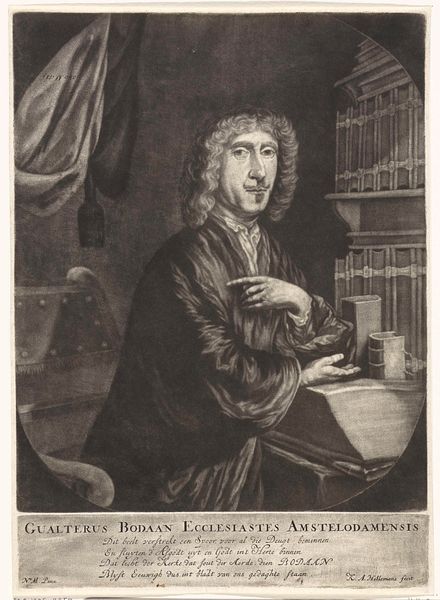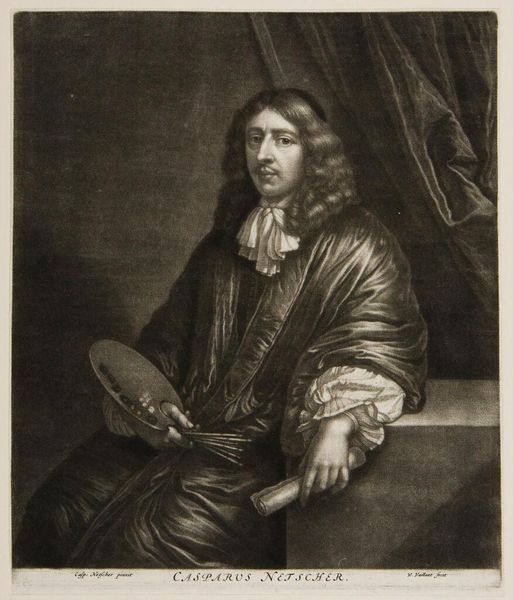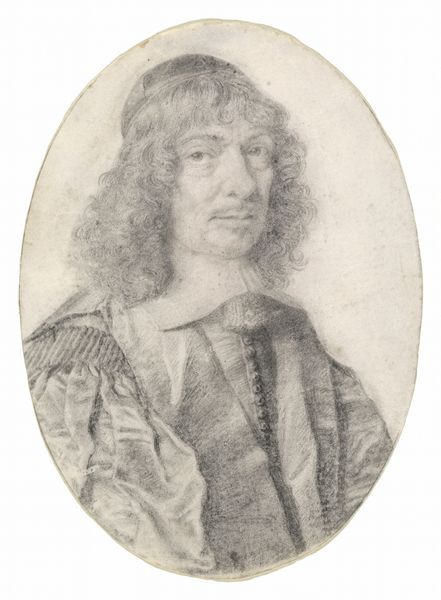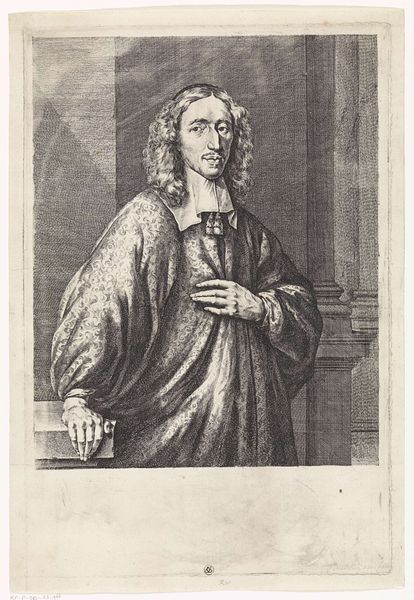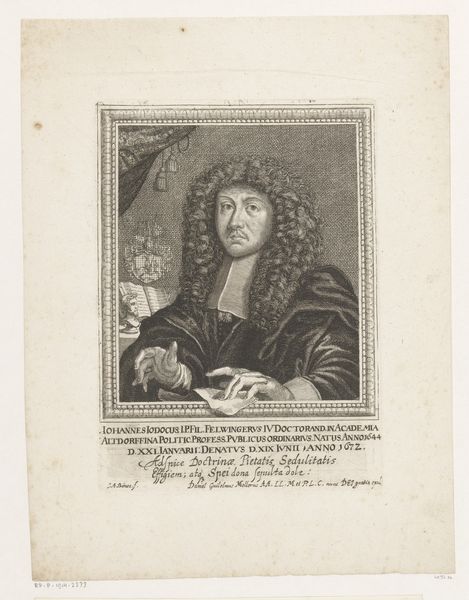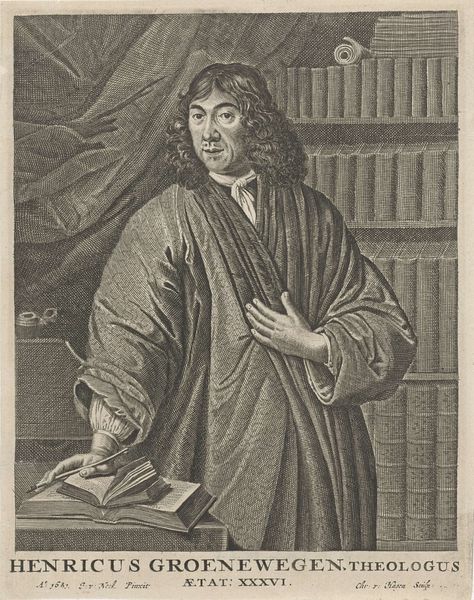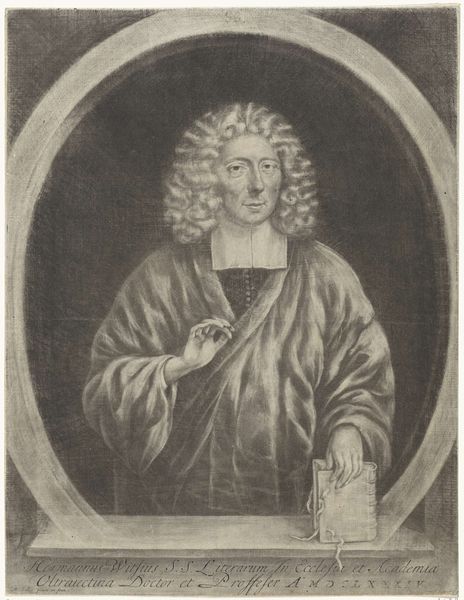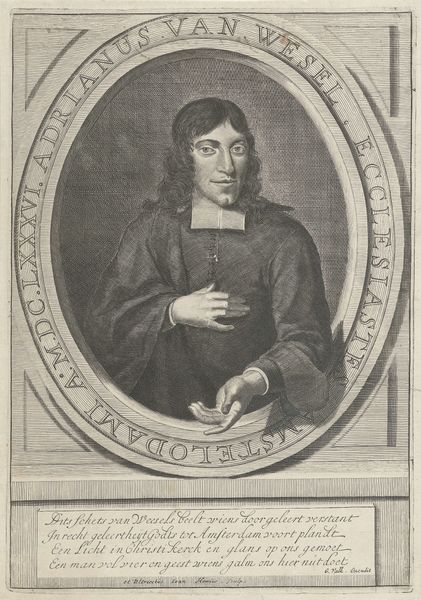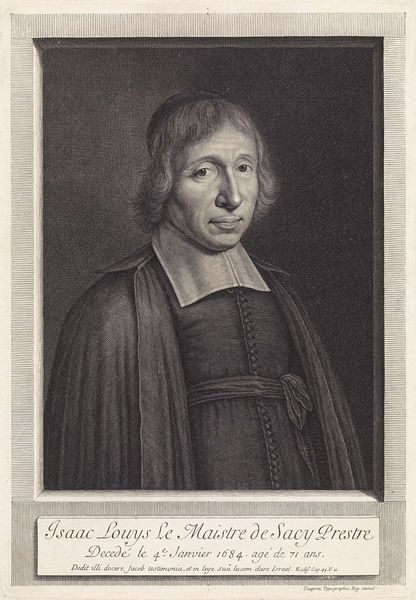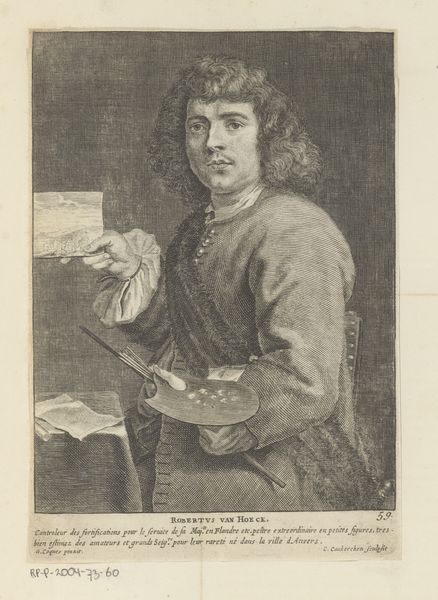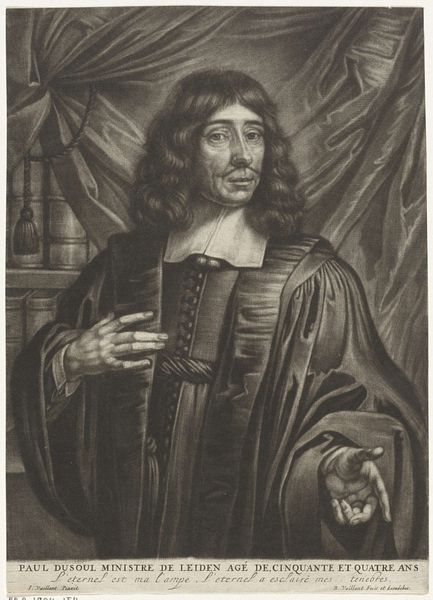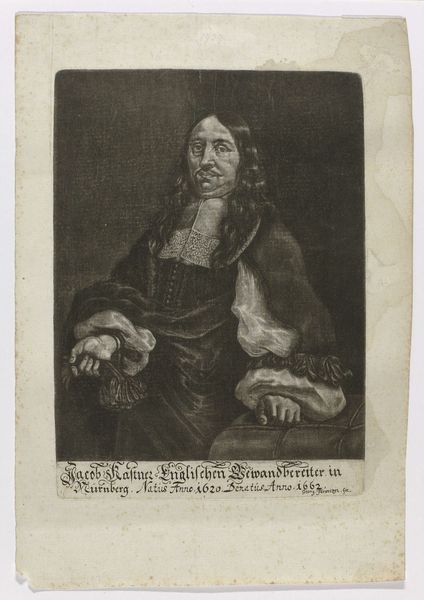
drawing, charcoal
#
portrait
#
drawing
#
dutch-golden-age
#
charcoal drawing
#
pencil drawing
#
genre-painting
#
charcoal
#
charcoal
#
watercolor
Dimensions: height 490 mm, width 400 mm
Copyright: Rijks Museum: Open Domain
Curator: This intriguing piece is titled "Portret van Gualterus Boudaen," created sometime between 1650 and 1699 by Cornelis A. Hellemans. It appears to be executed in charcoal, maybe with watercolor elements as well, offering a subtle grayscale palette. Editor: Ah, he's got that whole 17th-century intellectual vibe, doesn’t he? Sort of melancholic, pointing dramatically like, "Read this book or face my eternal disappointment!" I like the chiaroscuro; it’s all moody and atmospheric. Curator: The stark contrast certainly enhances the sense of drama. The formal arrangement, a seated portrait with books, signifies Boudaen's scholarly profession. Consider the semiotics of the hand gesture; it could be interpreted as didactic, even accusatory as you pointed out, yet inviting in another way. The use of charcoal lends a certain softness. Editor: Right, that softness is key. It keeps it from being too severe, adding a touch of humanity to an otherwise formal pose. There’s something appealing in the slight imperfections of the medium, compared to slick oil paint. It's like peeking behind the curtain of the official portrait. Makes you wonder what he's really like! Maybe he was fun at parties… Or maybe I am just projecting. Curator: I agree about the medium being the strength. The charcoal allows the artist to focus on the contrasts within light and dark. There are few overt symbols, so this portrait hinges mainly on its formal execution and the psychology of the sitter as it is expressed through line, texture, and value contrast. The materiality adds a degree of verisimilitude. Editor: Well, Cornelis A. Hellemans really nailed that slightly judgmental gaze then. It’s strangely compelling, this austere yet intimate glimpse into a long-ago person. I imagine that charcoal portraiture such as this may represent the era's approach to both honouring an individual's status and reflecting on deeper human questions of personality. It seems much easier to judge and dissect today. Curator: Ultimately, this portrait offers us a structured yet textured glimpse into a past era's artistic and social conventions, a study in both form and the enduring quest for portraying human essence. Editor: I like that: form *and* essence. Yep. Now if you’ll excuse me, I have a book to go read before someone starts pointing fingers.
Comments
No comments
Be the first to comment and join the conversation on the ultimate creative platform.
